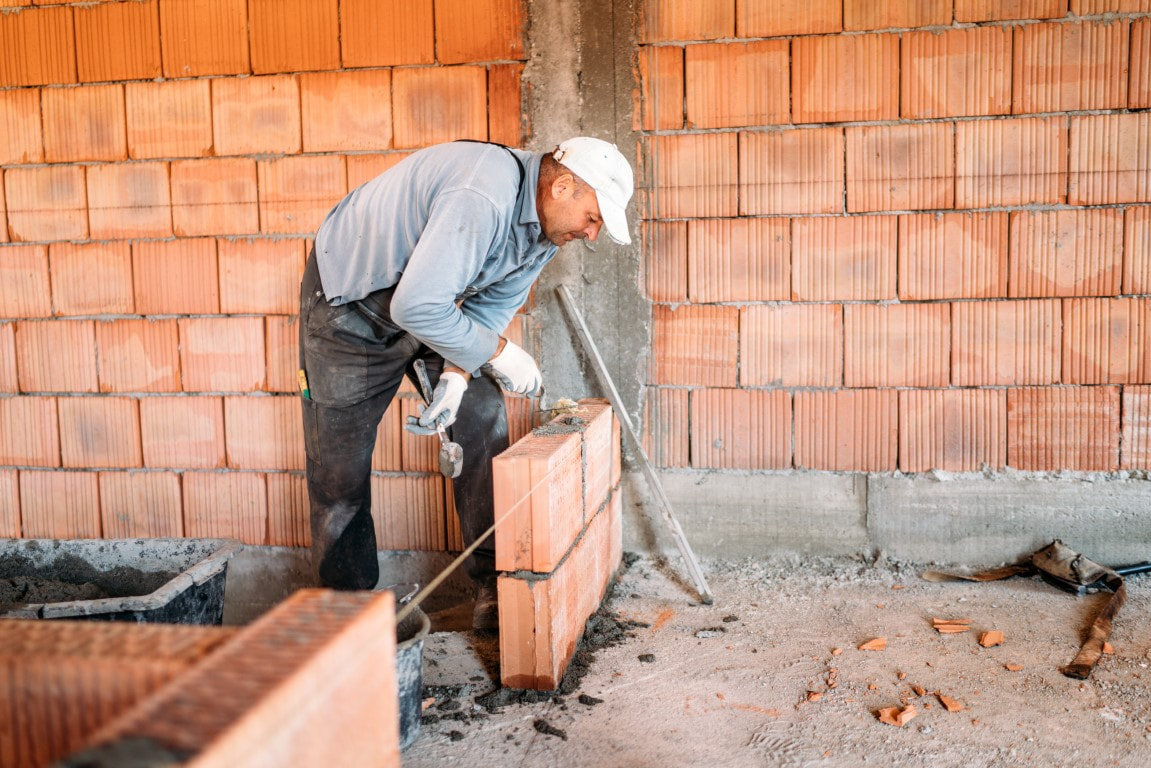Top-notch Roofing Contractor Services for Your Home
Top-notch Roofing Contractor Services for Your Home
Blog Article
Opening the Keys of Lasting Masonry Building Practices for Eco-Friendly Buildings
In the realm of modern-day building and construction, the quest of lasting practices has come to be paramount. Amongst the myriad strategies to environment-friendly structure, sustainable stonework building attracts attention as a reliable and resilient technique that holds a wide range of untapped possibility. From the choice of products to cutting-edge building methods, the keys to attaining sustainability within masonry building are multifaceted and fascinating. By checking out the advantages, products, techniques, and future patterns of lasting masonry, a deeper understanding of how these techniques can shape the future of environment-friendly structures arises.
Benefits of Lasting Masonry Construction
Accepting lasting masonry construction practices not just minimizes ecological influence yet also offers long-term financial advantages to builders and neighborhoods. By utilizing products like recycled blocks, obstructs, and stones, home builders can considerably reduce the carbon impact of their tasks while promoting resource performance. Additionally, lasting masonry building techniques, such as appropriate insulation and thermal mass properties, can boost power effectiveness within buildings, causing decreased functional prices gradually.
In addition, the longevity and resilience of stonework frameworks contribute to long-term financial advantages. Buildings created making use of lasting masonry methods frequently need much less repair and maintenance, converting to cost financial savings for builders and homeowner. The durability of masonry products additionally makes certain that structures remain steady and safe and secure, lowering the demand for regular restorations or replacements.
Eco-Friendly Stonework Products
Making use of eco-friendly masonry products is an essential step towards improving the sustainability of construction practices and lessening ecological effect while optimizing long-term financial benefits. Lasting stonework products are sourced, created, and utilized in a manner that decreases general ecological effect. Products such as recycled blocks, redeemed stone, and sustainable concrete blocks are ending up being increasingly preferred selections for eco-conscious contractors. Recycled blocks, for instance, not just draw away waste from garbage dumps but likewise need less energy to produce contrasted to brand-new bricks. Recovered stone offers a distinct aesthetic allure while reducing the need for brand-new quarrying. Sustainable concrete obstructs incorporate recycled aggregates and might feature improved insulation properties, adding to energy efficiency in structures.
In addition, natural materials like adobe, rammed planet, and straw bales provide exceptional thermal mass residential or commercial properties, reducing the requirement for home heating and cooling down energy. These products are frequently in your area offered, promoting local economic situations and decreasing transportation-related carbon emissions. By choosing environmentally friendly stonework products, building projects can substantially decrease their ecological footprint and Continued contribute to the production of healthier, much more lasting constructed atmospheres.
Energy-Efficient Stonework Techniques
Power effectiveness plays an important role in improving the sustainability of stonework building techniques. By implementing energy-efficient stonework strategies, builders can substantially minimize the total power usage of a building, causing lower operational expenses and a smaller sized environmental footprint. One vital energy-efficient masonry method is the usage of thermal mass, which involves including thick products like concrete or brick into the building's framework to absorb and keep warm. This helps regulate interior temperatures, minimizing the demand for Your Domain Name mechanical heating and cooling systems.

Developments in Lasting Masonry
Recent advancements in sustainable masonry techniques have actually produced innovative techniques that are reshaping the construction market. One such advancement is the advancement of self-healing concrete, which utilizes bacteria embedded within the concrete to heal fractures autonomously. This development not just lowers maintenance expenses however also improves the sturdiness of masonry structures, adding to their sustainability.
Another notable development is the usage of recycled accumulations in masonry building - masonry contractor. By including products such as crushed ceramic waste or recycled glass right into concrete blends, builders can lower the ecological impact of construction projects while preserving architectural stability. This practice not only draws away waste from landfills but additionally saves natural sources, making it a vital advancement in lasting masonry construction
Furthermore, the assimilation of digital design tools, such as Building Info Modeling (BIM), is changing the way stonework structures are prepared and constructed. BIM enables for more accurate estimations, reduced material wastefulness, and boosted power effectiveness, ultimately resulting in even more lasting building techniques. These technologies collectively represent an encouraging future for sustainable stonework construction in the age of environment-friendly structures.
Future Trends in Masonry Sustainability
With the innovative strides made in lasting stonework practices, the future patterns in stonework sustainability are positioned to more transform the building and construction sector. One of the essential patterns forming the future of masonry sustainability is the enhanced assimilation of technology. Developments such as Building Details Modeling (BIM) and digital reality simulations are being used to optimize masonry building and construction processes, resulting in decreased product waste and enhanced energy performance in buildings.
Additionally, the advancement of novel lasting materials is readied to play a considerable role in improving the eco-friendliness of masonry construction. masonry contractor. Developments like self-healing concrete, recycled accumulations, and bio-based binders are gaining traction for their capability to decrease ecological influence while preserving architectural integrity

Conclusion
To conclude, sustainable masonry building methods offer countless benefits for green buildings. By utilizing eco-friendly products and energy-efficient techniques, masonry can add to a more sustainable built environment. Innovations in lasting stonework are constantly being developed to better boost the environmental performance of buildings. Looking in the direction of the future, the fad of masonry sustainability is expected to grow, leading to more eco-friendly and energy-efficient building practices in the years to come.
Report this page